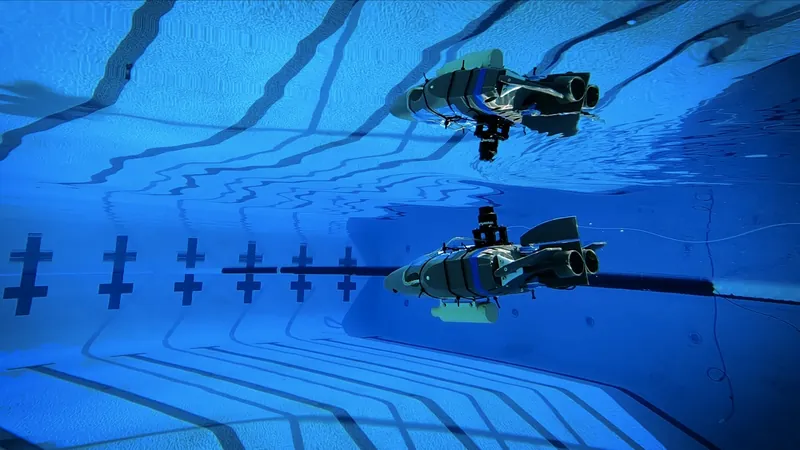
NASA's Ambitious Plan to Uncover Life Beneath Europa's Ice: Tiny Swimmers Set to Dive Deep!
2024-11-25
Author: Rajesh
Exploring Europa's Ocean
Europa, one of Jupiter's most fascinating moons, has long been a subject of scientific intrigue, particularly in the search for extraterrestrial life. Buried beneath its thick, icy surface is a vast ocean that has created a buzz in the astrobiology community. Scientists believe that this hidden ocean might harbor life forms similar to those found in Earth's deepest trenches, where ecosystems thrive in complete darkness, relying on geothermal heat and chemicals for sustenance.
Innovative Robotic Prototypes
In a groundbreaking effort, NASA engineers have recently tested innovative prototypes of miniature swimming robots designed to explore the sub-ice oceans of Europa, as well as other icy celestial bodies. These robots, conceptualized to operate in swarms, aim to penetrate the icy shell and interact directly with the ocean beneath, providing valuable data on its composition and potential habitability.
Europa's Characteristics
Europa, discovered over 400 years ago by the astronomer Galileo, measures about 3,120 kilometers across and orbits Jupiter at a distance of approximately 671,000 kilometers. This moon is predominantly composed of silicate rock and is encased in a thick crust of water ice, believed to cover a liquid water ocean beneath—one of the primary factors driving the scientific push for exploration.
Life in Extreme Environments
Drawing parallels to Earth's deep oceans, where ecosystems flourish around geothermal vents, scientists speculate that similar processes could potentially support life in Europa's hidden depths. The potential discovery of extraterrestrial organisms could not only answer age-old questions about life beyond Earth but also reshape our understanding of biology in extreme environments.
The Europa Clipper Mission
NASA's ambitious Europa Clipper mission, set to arrive in 2030, will conduct a series of 49 flybys to gather data from high above Europa's icy surface. Equipped with cutting-edge scientific instruments, the Clipper will meticulously search for signs of life and evaluate the moon's ability to host it. However, the mission is just the beginning, as NASA is already contemplating a more complex follow-up expedition that will involve deploying these swimming robots.
Introducing the SWIM Mission
Enter the SWIM mission—Sensing With Independent Micro-swimmers. This innovative endeavor consists of a swarm of small, independently functioning robots roughly the size of a smartphone. Designed to be deployed via ice-penetrating cryobots, these swimmers will probe the dark, unexplored oceans of Europa, searching for chemical and thermal signatures that suggest biological activity.
Progress and Challenges
The progress so far has been promising. Engineers have constructed 3D-printed prototypes that were tested in a controlled environment—a 23-meter deep pool. These prototypes, propelled by dual propellers with steerable flaps for precise navigation, effectively maintained their course during trials. Although the initial versions are larger than the final models intended for Europa, the results demonstrate that the concept is feasible.
Future Directions
As excitement mounts, scientists and engineers are aware of the challenges ahead. Additional testing on Earth will be conducted to refine these robots and apply their technologies to oceanographic research before they embark on their interplanetary mission. The quest to explore Europa's hidden ocean and potentially uncover alien life is a tantalizing prospect—and as each step is taken, we edge closer to answering the question: Are we truly alone in the universe?



 Brasil (PT)
Brasil (PT)
 Canada (EN)
Canada (EN)
 Chile (ES)
Chile (ES)
 España (ES)
España (ES)
 France (FR)
France (FR)
 Hong Kong (EN)
Hong Kong (EN)
 Italia (IT)
Italia (IT)
 日本 (JA)
日本 (JA)
 Magyarország (HU)
Magyarország (HU)
 Norge (NO)
Norge (NO)
 Polska (PL)
Polska (PL)
 Schweiz (DE)
Schweiz (DE)
 Singapore (EN)
Singapore (EN)
 Sverige (SV)
Sverige (SV)
 Suomi (FI)
Suomi (FI)
 Türkiye (TR)
Türkiye (TR)